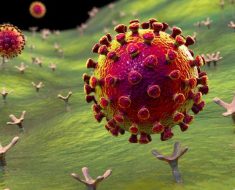- More than 600 people have developed salmonella infections in an outbreak linked to onions.
- The onions were distributed in all 50 states, and cases have been reported in 43 states.
- Salmonella infections typically cause gastrointestinal issues, such as diarrhea, nausea, vomiting, fever, and abdominal cramps.
Forty-three states are currently grappling with a widespread Salmonella bacteria outbreak linked to various types of onions.
As of Monday,
The
The onions were distributed in all 50 states, and cases have been reported in
“The onions are being recalled because they have the potential to be contaminated with Salmonella, an organism that can cause serious and sometimes fatal infections in young children, frail or elderly people, and others with weakened immune systems,” stated the
Here’s what’s been recalled
The
The onions were distributed in all 50 states to numerous wholesalers, restaurants, and retail stores, such as Walmart, Kroger, Publix, Giant Eagle, Food Lion, and Fred Meyer.
They were sold under various brand names, including Thomson Premium, TLC Thomson International, Tender Loving Care, El Competitor, Hartley’s Best, Onions 52, Majestic, Imperial Fresh, Kroger, Utah Onions, and Food Lion, according to the CDC.
Certain
What to know about salmonella infections
Salmonella infections typically cause gastrointestinal issues, such as diarrhea, nausea, vomiting, fever, and abdominal cramps, according to Dr. Stanley Deresinski, an infectious disease physician at Stanford Health Care.
Symptoms typically set in anywhere from
Most people will have mild symptoms and be able to recover on their own at home with rest and hydration.
“The most important part of treatment is aimed at rehydration,” said Dr. Teresa Murray Amato, the chair of emergency medicine at Northwell Health’s Long Island Jewish Forest Hills.
This can usually be done at home with fluids containing water and electrolytes.
A small percentage of people with a salmonella infection experience more severe complications.
If vomiting and diarrhea persist and it becomes difficult to stay hydrated, go to a healthcare facility.
Intravenous fluids may be given to help hydrate you, says Amato.
Children under 5 years and those with weakened immune systems are also more likely to develop severe symptoms.
A salmonella diagnosis is made through a culture of stool. In some cases, antibiotics may be necessary.
In less than
“These sites may include bone (causing osteomyelitis), heart valves (endocarditis), and the walls of arteries (mycotic aneurysm), as well as various organs where an abscess may form,” Deresinski said.
In severe cases, it’s crucial to get immediate treatment.
“Untreated infection can lead to dehydration and even death from Salmonella entering the bloodstream,” said Dr. Len Horovitz, an internist at Lenox Hill Hospital.
The death rate is generally low — below 1 percent — according to Amato.
Going to the hospital during the pandemic
Some people may be hesitant about visiting the emergency department due to the COVID-19 pandemic.
Amato says emergency departments have “made the patient care areas as safe as possible.” They’ve worked with the local and state health departments to ensure all staff and patients are kept as safe as possible during the pandemic.
Everyone, staff and patients, will be wearing masks. Surfaces will be disinfected frequently.
“But the bottom line: You should not avoid the ED if you think you may need evaluation,” Amato said. “Salmonella dehydration can be safely and quickly treated if you seek care.”
The bottom line
Various types of onions contaminated with Salmonella bacteria have been recalled. The onions, which were distributed and sold in all 50 states, have led to 640 infections across 43 states.
Salmonella causes a mild to moderate gastrointestinal illness in most people. A small percentage may experience severe complications. If symptoms persist, it’s important to visit a hospital and get rehydrated.
Source: Read Full Article





